Ali Faisal
Kernel convolution model for decoding sounds from time-varying neural responses
Jul 21, 2015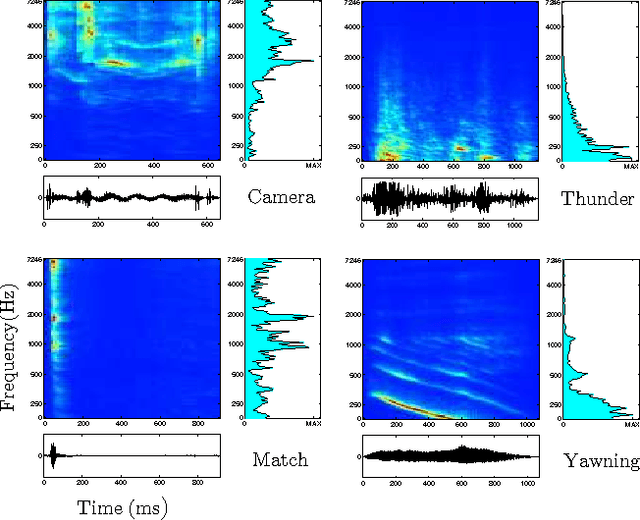
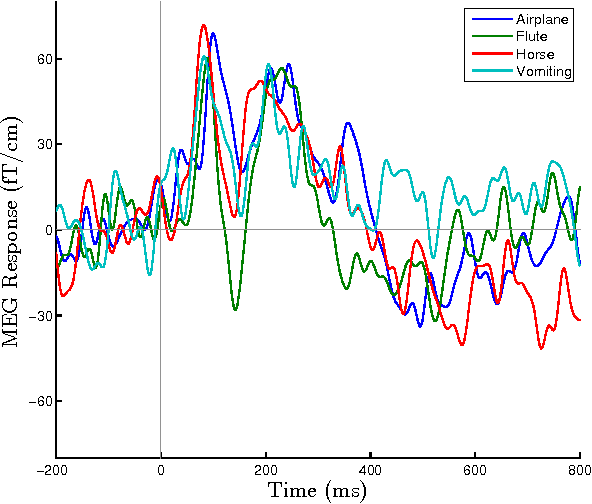
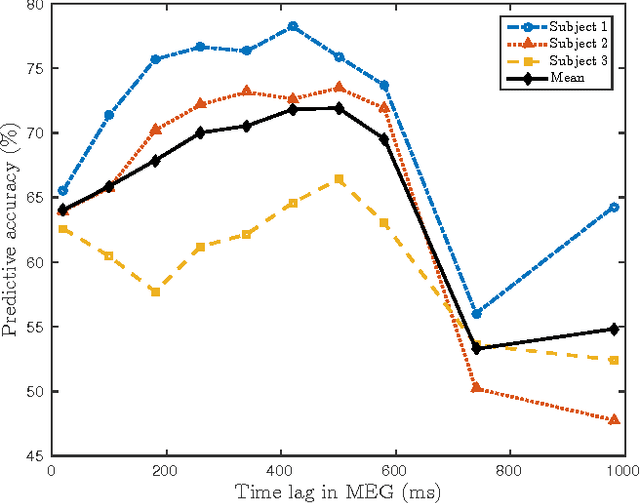
Abstract:In this study we present a kernel based convolution model to characterize neural responses to natural sounds by decoding their time-varying acoustic features. The model allows to decode natural sounds from high-dimensional neural recordings, such as magnetoencephalography (MEG), that track timing and location of human cortical signalling noninvasively across multiple channels. We used the MEG responses recorded from subjects listening to acoustically different environmental sounds. By decoding the stimulus frequencies from the responses, our model was able to accurately distinguish between two different sounds that it had never encountered before with 70% accuracy. Convolution models typically decode frequencies that appear at a certain time point in the sound signal by using neural responses from that time point until a certain fixed duration of the response. Using our model, we evaluated several fixed durations (time-lags) of the neural responses and observed auditory MEG responses to be most sensitive to spectral content of the sounds at time-lags of 250 ms to 500 ms. The proposed model should be useful for determining what aspects of natural sounds are represented by high-dimensional neural responses and may reveal novel properties of neural signals.
Toward computational cumulative biology by combining models of biological datasets
Apr 01, 2014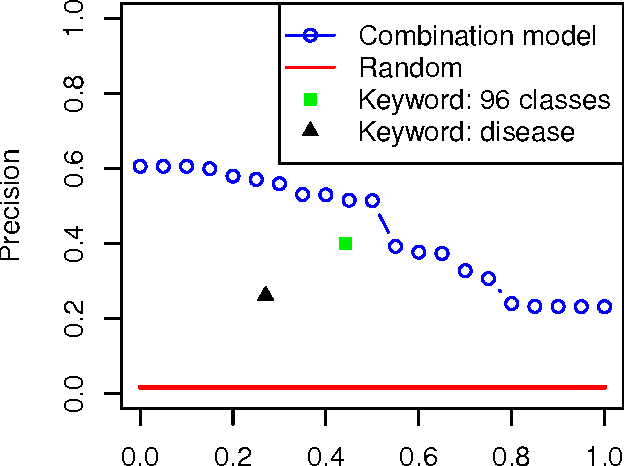
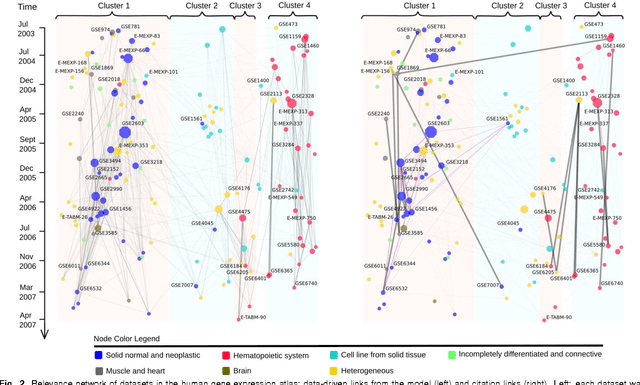
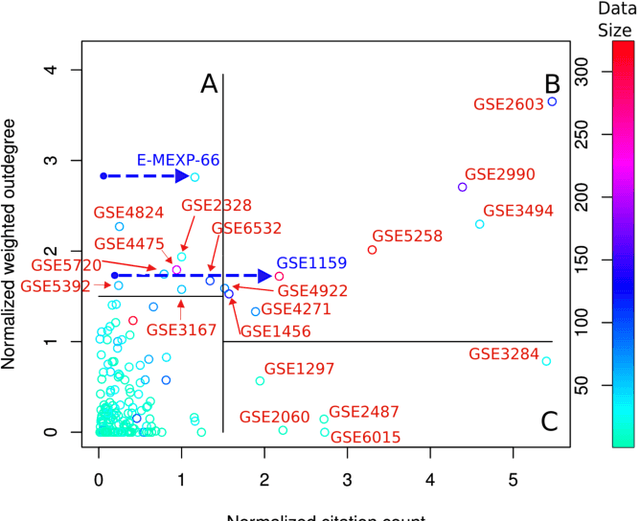
Abstract:A main challenge of data-driven sciences is how to make maximal use of the progressively expanding databases of experimental datasets in order to keep research cumulative. We introduce the idea of a modeling-based dataset retrieval engine designed for relating a researcher's experimental dataset to earlier work in the field. The search is (i) data-driven to enable new findings, going beyond the state of the art of keyword searches in annotations, (ii) modeling-driven, to both include biological knowledge and insights learned from data, and (iii) scalable, as it is accomplished without building one unified grand model of all data. Assuming each dataset has been modeled beforehand, by the researchers or by database managers, we apply a rapidly computable and optimizable combination model to decompose a new dataset into contributions from earlier relevant models. By using the data-driven decomposition we identify a network of interrelated datasets from a large annotated human gene expression atlas. While tissue type and disease were major driving forces for determining relevant datasets, the found relationships were richer and the model-based search was more accurate than keyword search; it moreover recovered biologically meaningful relationships that are not straightforwardly visible from annotations, for instance, between cells in different developmental stages such as thymocytes and T-cells. Data-driven links and citations matched to a large extent; the data-driven links even uncovered corrections to the publication data, as two of the most linked datasets were not highly cited and turned out to have wrong publication entries in the database.
 Add to Chrome
Add to Chrome Add to Firefox
Add to Firefox Add to Edge
Add to Edge